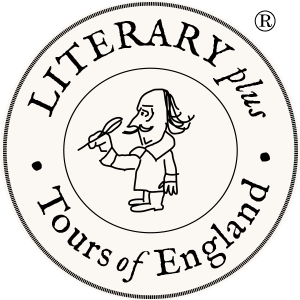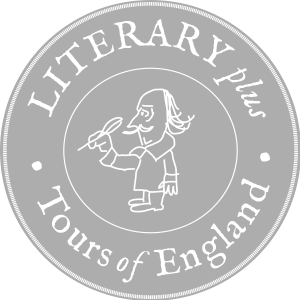
Take Thomas Carlyle (1795-1881) – actually a native of Scotland – who might be best known for “The French Revolution: A History” (the inspiration for Charles Dickens’ “A Tale of Two Cities”). He’s included in our list because his house in London’s elegant Chelsea district, lovingly preserved and maintained by the National Trust(1), stands not only as a memorial to the man but also as a faithful reminder of the times in which he lived.
Or take Gilbert White (1720-1793) – a pioneer of natural history, best remembered for his classic book “The Natural History and Antiquities of Selborne”. He’s also included in our list because his family home in Hampshire – not far from Jane Austen’s home – has been carefully restored and the wonderful garden has been recreated in the manner of White’s original design. Unquestionably, Gilbert White’s house is a unique national treasure.
On the other hand, many renowned writers have little more than a statue (or other memorial) and a grave to remember them by. Notable examples include Geoffrey Chaucer (c1343-1400), EM Forster (1879-1970), TS Eliot (1888-1965), JRR Tolkien (1892-1973) and George Orwell (1903-1950).
For HG Wells (1866-1946) there’s only a statue: after his death in 1946 his body was cremated and the ashes scattered at sea. For Oscar Wilde (who was, of course, Irish and is famously buried in Paris) there is, in England, only a statue and a memorial window in Poets’ Corner in Westminster Abbey, London(2).
Others have only a grave to celebrate their memory – except perhaps for a blue plaque(3) here or there. Notable examples include Joseph Conrad (1857-1924) (Heart of Darkness), Arthur Ransome (1884-1967) (Swallows and Amazons), Aldous Huxley (1894-1963) (Brave New World) and Evelyn Waugh (1903-1966) (Brideshead Revisited). Unfortunately these and many others cannot be included in our list.
For some there’s not even a burial site, let alone a statue or other memorial. For example, after his death in 1965, the body of playwright W Somerset Maugham (Of Human Bondage, The Razor’s Edge) was cremated and the ashes scattered in the grounds of The King’s School, Canterbury. Nor are there English memorials for PG Wodehouse (1881-1975) (creator of Bertie Wooster and his inimitable valet Jeeves) whose grave is in the United States or for Graham Greene (1904-1991) (The Quiet American, The Third Man) who is buried in Switzerland.
Contemporary writers – such as Alan Bennet, John Le Carré and Tom Stoppard – typically do not qualify for memorials (yet). However, in the case of JK Rowling, the creator of Harry Potter, an exception of sorts can be made. The mythical Platform 9¾ at King’s Cross railway station in London provides a unique tribute to her genius. Never mind that it’s located between platforms 8 and 9 or that Ms Rowling has said she was actually thinking of Euston station!
Non-English writers are included in our list where there’s a relevant connection to England, for example: Roald Dahl (Welsh), JM Barrie, Thomas Carlyle, Daniel Defoe, Arthur Conan Doyle (all Scottish), CS Lewis, George Bernard Shaw, Laurence Sterne, Bram Stoker, Oscar Wilde (all Irish). Also included are two great American-British writers. The novelist Henry James was born in New York City in 1843. After spending much of his life in Europe, he settled in England and became a British subject in 1915. The poet and playwright TS Eliot was born in St Louis, Missouri in 1888. He moved to England at the age of 25 and lived there for the rest of his life, becoming a British subject in 1927.




